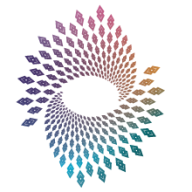Co-Active Leadership: Five Ways to Lead 2nd Edition!
- POSTED ON APRIL 28, 2021

Writing a book is such a process. Most often it is a labor of love as we pour our heart out onto the cool, white page. It’s both a relational process and an evolutionary one. As the book unfolds, we often discover that the book is writing us as much as we are writing it.
Somehow, both magically and painfully, the book takes shape, eventually arriving at the frustrating, exhilarating and hugely relieving deadline when the final manuscript is submitted. Whew! You are done!
Except, you’re not. The moment the final draft is submitted, there are at least ten really important things you forgot to say. And there are at least two or three things that are either outdated or not quite right. Your thoughts and your ideas are frozen in time in the pages of the book, even as your understanding and your thinking about the topic continues to expand and evolve.

This was certainly the case with the first edition of Co-Active Leadership: Five Ways to Lead. When we wrote that first edition in 2015, the model was still young. We were very much in the process of discovering how to help people understand the value of multi-dimensional leadership and how to develop agility with the different dimensions in work and in life. While we had begun to feature the Co-Active Leadership Model prominently in CTI’s ten-month leadership program, we hadn’t yet had the opportunity to wrestle with it over time. Still, even though our thinking around the model was somewhat young, we felt it was important to offer this new model for our world to play with and create from.
A lot has happened in the six years since we published the first edition. The world has changed a great deal, as have we. Our understanding of Co-Active Leadership has evolved as well. We’ve had a chance to work extensively with the Co-Active Leadership Model with our clients, students and organization. There have been many, many lively, exploratory conversations with colleagues and with each other. We’ve also had an opportunity to design a three-day course called the Co-Active Leadership Experience, and we’ve learned a great deal about how to support people in understanding and using this multi-dimensional approach in all areas of their life.
It was always our intention to offer a future edition of the book, one that was more comprehensive and whole — one, we hope, that is more useful, inspiring, and accessible. So we are excited to share this second edition of Co-Active Leadership: Five Ways to Lead.
The book has gone through a material transformation, having been expanded and updated throughout. There are two brand-new chapters. Chapter 2, “Your Leadership Journey,” gives tangible, real-world examples of where and how to use the Co-Active Leadership Model. Chapter 3, “What Is Co-Active?,” offers an expansive exploration of the Co-Active philosophy and its application in today’s world.
Additionally, each of the five dimension chapters has been significantly expanded with deeper context and more examples. Finally, each chapter concludes with a list of specific suggestions for developing the particular dimension of either Leader in Front, Leader Beside, Leader Behind or Leader in the Field.
Most importantly, with this second edition, Co-Active Leadership evolves from an outline of the Co-Active approach to leadership to a practical guide for developing Co-Active Leadership in oneself, in one’s family and clients, and in teams and organizational systems. We hope you will enjoy the second edition of Co-Active Leadership: Five Ways to Lead, and most of all, we hope you will use it to grow Co-Activity in yourself and in your world.
For a deeper dive into the five dimensions of Co-Active Leadership, check out the Co-Active Leadership Experience course. This immersive program will give you a deeper understanding of the different expressions of the Co-Active Leadership Model and allow you to practice applying them in a range of situations. Don’t miss it!
With Love,
Karen and Henry Kimsey-House
Co-Founders, Co-Active Training Institute






